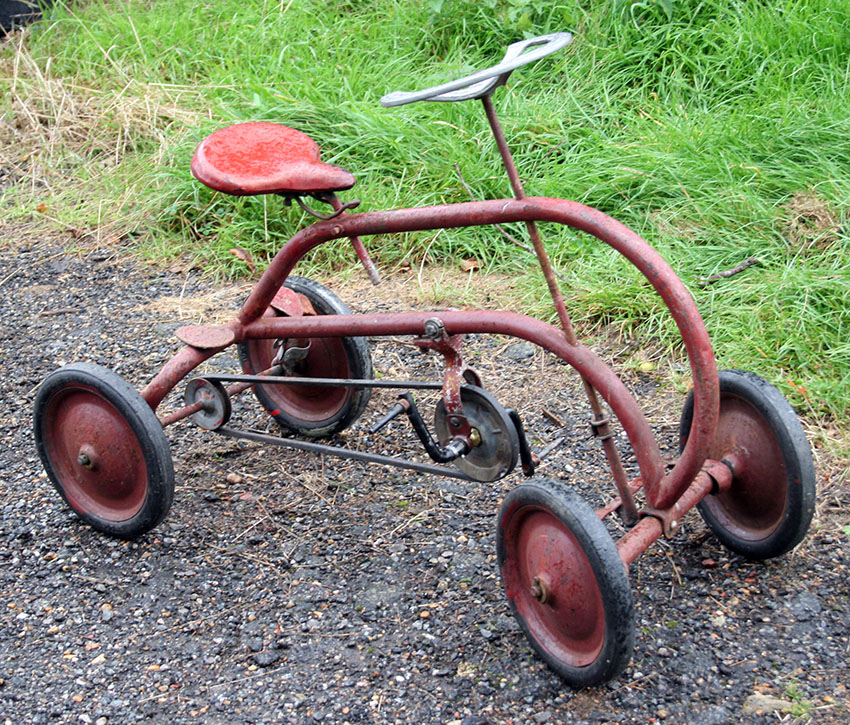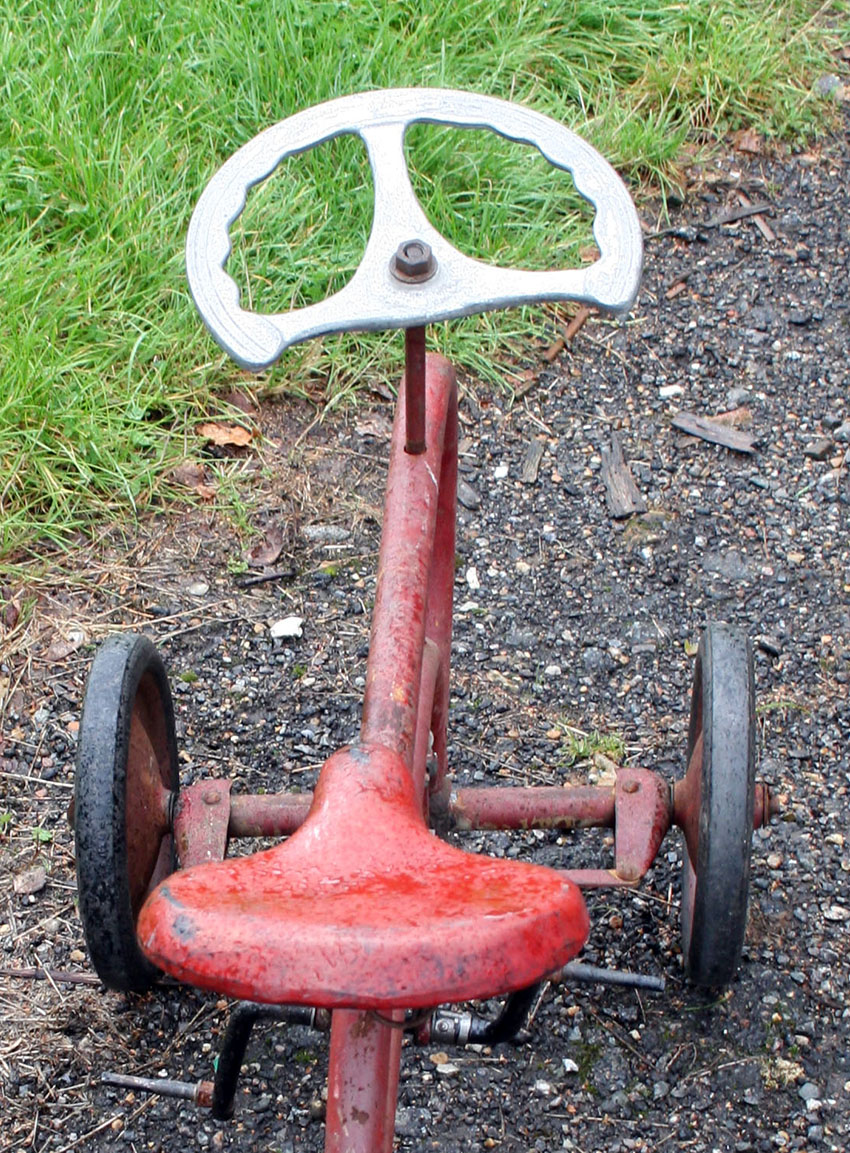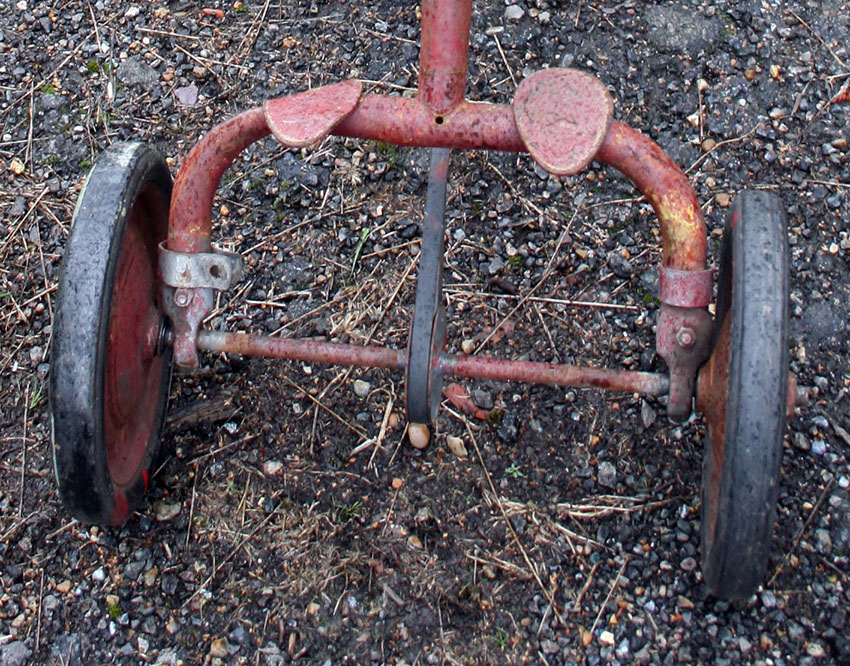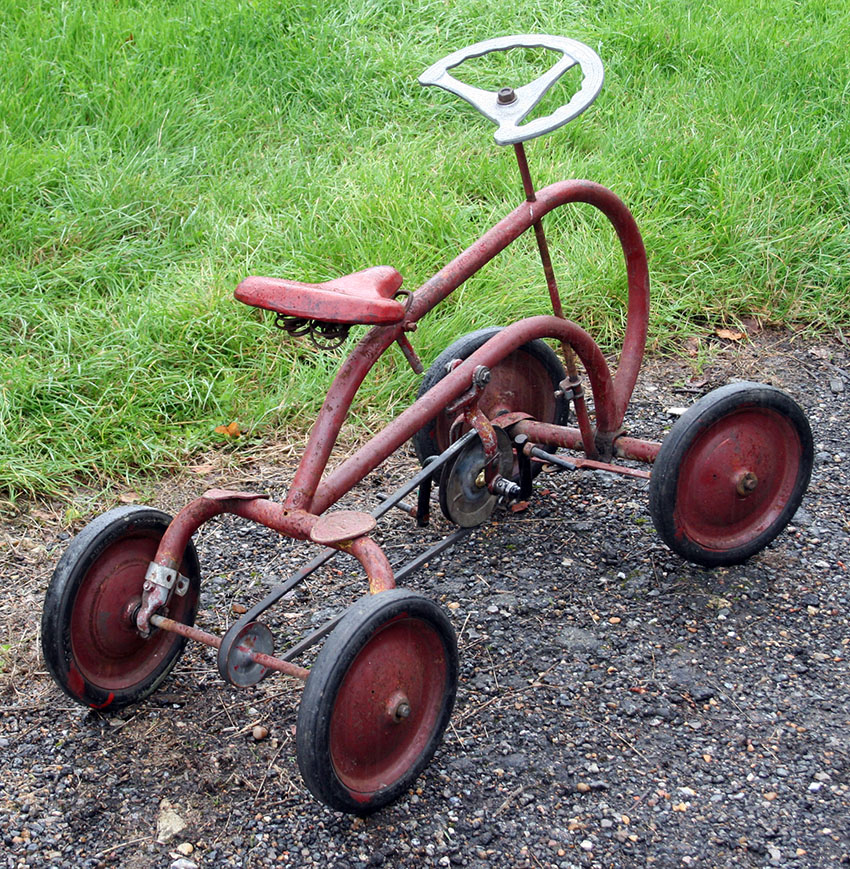

When the Metal Specialties Company, Incorporated, of Cudahy, Wisconsin, came out with this nifty sidewalk cruiser in 1946 they decided it looked like a cross between a pedal car and a bike, hence the name ‘Kar-Bike.’ There were single tube and double tube models.
The biggest selling feature for this toy was the pivoting front axle. When you took a corner a little too fast both front wheels stayed on the ground. This was accomplished by a simple bearing where the frame tied into the front axle. A drag-link mechanism enabled the steering to function as the body tilted.
In April of 1947, Metal Specialties announced another model designed for children 18 months to 4 years. It featured enclosed pulleys and a pedal housing. It is not known if this version, Model S-2047, was ever built. The ad stated they were to be released in June of 1947.
By February of 1948 the Kar-Bike was still on the market, but was now being sold by Weller Products, Inc, of Milwaukee, Wisconsin. E.J Weller Jr was the original patentee, his design being filed with the patent dept on 14th October, 1940 – presumably initial production was halted by the war.
Weller Products Inc labeled their 1948 version as ‘Model No. 1000.’ Weller continued production of the Kar-Bikes until at least February of 1949. It is not known how many were produced or when production finally ended.


1948 Kar-Bike Double Tube Quadricycle
Belt-Drive
Length: 35″
10″ Wheels

Comparing the patent application for the Kar-Bike with the adverts below and the actual machine above, we can see a few variations: it did not end up with either the twin front lights or the elaborate one-piece chaincase/pedal support. And an aluminium steering wheel found its way onto he production models.
This example has had a few repairs, so a close examination has allowed us to see the most likely reasons for its demise after a few years usage by young riders. Its design faults include:
A weak point where the pedal sprocket support meets the main frame; this can not be welded in place because otherwise there would be no adjustment for the belt. With the constant motion of pedalling there is undue stress here.
The pedals cranks have very little support as the sprocket hangs below the frame, rather than being in the strongest point as in a bicycle. One of the pedal cranks on this example had snapped, requiring replacement pedal cranks and axle to be fitted.
According to the adverts for the Kar-Bike, it has ‘three point suspension on four wheels.’ But this is another weak point: extra pivoting on the front axle (to allow travel in different directions) means excessive stress on the front end is unsupported.
The aluminium steering wheel – presumably purchased from a company that built pedal cars – is very attractive. But that is all the rider has to hold onto, so it is liable to be one of the first things to break.
The Kar-Bike is a fabulous creation, a superb combination of tricycle and pedal car, and you can see how it would have been very popular with kids. But kids do not take care of their bikes and trikes when they ride them, so I’m sure most of them had to go back to the retailers and manufacturers for repair or replacement.




















1948 SINGLE TUBE KAR-BIKE

TO SEE THE
1948 SINGLE TUBE KAR-BIKE
PLEASE CLICK HERE





























